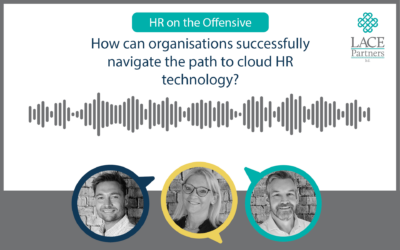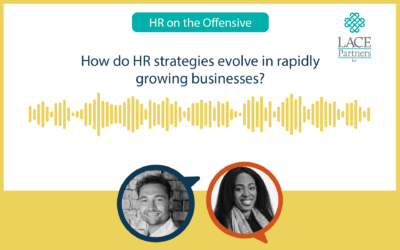Recently we held the latest in a series of CPO forum events, hosted wonderfully by a fantastic team at Claridge’s. The event saw the return of a few long-standing friends of LACE, but we welcomed some new clients and new forum members into the mix.
With far too many years of senior CPO experience to mention, we brought together people function leaders from across industries – including entertainment and creative agencies, fintech and insurance, utilities, life sciences and more.
We firmly believe that the commonality of our functional breadth mixed with the diversity of industry makes for a valuable and enlightening discussion on any topic, and this event was no different. Today’s blog is an overview of some of the key discussion points from our latest event – and more information about how you can get involved is at the bottom of this blog.
Why benchmarking?
It’s a question we get asked often during our work with clients, and it’s a question we love to debate! CPOs are asked for – or want – benchmark data to demonstrate value, ROI or validate a case for change. It’s a topic we’ve spoken about and written about before but remains a curiosity! So, we thought we’d get some discussion going about when it can work for you or against you and some of the watch points and alternatives.
It’s important to first consider the question you are seeking to answer and why you need it. This will determine the appropriate metrics, comparators and benchmarks.
We’re most frequently asked for ratio data – how many HR team members should I have in relation to FTE numbers, and we challenge back – what’s the purpose of having that number, and how relevant is it, really?
Apples with apples
Comparisons might be useful, but there are several factors that you need to consider to be confident that the benchmarks you are using are relevant for your business.
Our members shared their own perspectives on some of the challenges of finding relevant and meaningful comparators:
- The make of up your people function and service: e.g. does your HR function include elements that might not be genetically included in all businesses – e.g. payroll, internal comms, change?
- The service you offer: are you a high-touch white glove HR service, or have you automated services?
- Your operating model: which elements of your function are outsourced and which remain in-house? What is centralised, and which services remain local?
- Hybrid working model: how will our different ways of working impact the service we have to offer?
- Future technology: what will greater adoption of AI mean for how we deliver HR services?
- Demographic factors: the size, geography, complexity of your business and whether it is on a path of growth, acquisition, diversification etc.
Pitfalls in the benchmarking data
We discussed some potential pitfalls in the benchmarking data we choose to use, or how we use it. In particular:
- It’s too tempting to excuse a delta in benchmarks and metrics by justifying why we are different. Whilst all of the factors mentioned above are really valid, we must also recognise the value in just finding out what others do that is different to us, and seeing how we can learn from it.
- Stay honest! Be really open to learning in your comparison – it’s too easy to only pick out the data that supports the story you want to tell, but in reality, a full data comparison will bring you much more insight.
- Look at a scattergram of data points rather than one fixed benchmark position – isolating in one single data point (e.g. an upper quartile) may not be right for your business at any given time. By considering a range, you may give yourself more relevant comparators and a broader range of options to consider.
- The best benchmarks will combine both efficiency and effectiveness. There is no point in drilling down on cost at the expense of customer experience. It’s important to ensure that the benchmarks are considered in the context of business – or functional – success.
- Look for providers who can give you benchmarks that are fit for purpose for your business, rather than a standardised ‘off the shelf’ set of data.
- People are difficult to benchmark. We can benchmark the service, the measures and the metrics, but it is not realistic to benchmark the magic that our people can bring to the services and experiences that we deliver to our people. We must not forget to value our functional talent.
Adding value
Our members discussed when benchmarking has supported their business and functional ambitions and added real value. These experiences included:
“What do they do that we are not doing?”
- If a benchmark is ‘better’ than your current metric, it’s valuable to consider how others might be getting to that number. “It informed me of what I couldn’t see.” It’s an opportunity to learn from others, broaden your functional thinking with new perspectives and establish your ambition.
“What can we achieve with investment?”
- It helped some of our members to demonstrate what they could achieve with the investment they have requested and provides a potential ROI data point or supports a case for change. It has really helped some executive teams to understand the ‘to be’ ambition, and the route to get there.
“If we don’t get investment, how far can we go?”
- Countering that, where investment is not forthcoming, or as full as you might hope, it encourages us to think about what changes are possible, and how far towards that benchmark we might be able to progress. Where investment was limited, it allowed some to be clear with exec teams what could not be achieved that competitors were achieving, and why.
“Where do we want to invest?”
- Benchmark data might help us to prioritise where we want to make investment, in order to optimise our HR services, impacting our people experience and our employer brand.
Qualitative comparisons
We shared our 10 Traits Framework which forms a core element of our People Function healthcheck approach. Our 10 traits model has been distilled from our research and our work with clients, to reveal the genetic code of a modern leading people function.
The 10 traits framework facilitates a qualitative comparison, providing CPOs with an opportunity to review how they stack up against best practice against the functional traits that we believe to be key.
We encouraged our guests to complete a high-level self-assessment of their own people function against the 10 traits and have subsequently sent each a one-page summary of their outcomes compared to the rest of the group.
Priority traits for people functions to develop to have a greater impact on their business and improve their functional effectiveness were reported across the group as:
- digital and technology enablement
- data and insights mindset and
- supercharged people managers
So what?
Whether benchmarking is a friend or foe may be very dependent on which benchmarks you select, how you use them and how you interpret them.
We recognise the value of using data to stimulate reflection, consider opportunities, and create a case for change, but would caution against blanket data points that don’t take into account any aspects of business context. We advocate the adoption of more qualitative measures that can help shape thinking and define ambition and determine a route to best practice that meets the needs of all your key stakeholders.
If you’re interested in finding out more about our 10 traits framework, our approach to people function health assessments or our CPO forum and events (invitation only), then drop your details in the below box and mention that you’d like to find out more.






